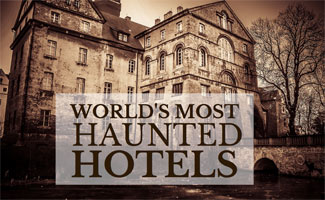To keep the lights on, we receive affiliate commissions via some of our links. Rankings remain impartial. Our review process.

Basic Facts about the Hope Diamond
The Size and Weight of the Hope Diamond
The hope diamond was weighed by the Gemological Institute of America’s Gem Trade Lab in 1988. At that time the gem was said to weigh 45.54 carats or 9.10 grams. The walnut sized diamond measures in at 1in × 7/8in × 15/32in.
The Color of the Hope Diamond
Those who have seen the Hope Diamond describe it as having a grey-blue color. According to the Gemological Institute of America’s Gem Trade Lab in 1996, the gem is graded as being fancy deep grayish blue. Many people tend to describe the depth of blue of this gem as being similar to a sapphire but the grey tones to it make it a little less sapphire-like.
Phosphorescence of the Hope Diamond
When exposed to short wave ultraviolet light, the Hope Diamond shines with incredible red phosphorescence that lingers for some time after the light source has been removed. Many people believe that this lingering red glow may have contributed to rumors of the diamond’s curse. Rather than a sign of a curse however, this glow is evidence of a nitrogen and boron mix that can be found in the basic elements of the stone.
Cut of the Hope Diamond
The “cut” of the Hope diamond is described by the Smithsonian as: “cushion antique brilliant with a faceted girdle and extra facets on the pavilion.”
The Clarity of the Hope Diamond
The Hope diamond has a clarity rating of VS1. A VS1 diamond is a diamond that has very slight inclusions that are difficult to see when viewed under a loupe with a 10 power magnification.
Ownership of the Hope Diamond
Throughout history the Hope Diamond has passed through a number of hands. In total, twenty-one owners have claimed the gem. The Smithsonian Museum is the current owner. Other renowned owners of this gem include: Harry Winston, Pierre Cartier, King Louis XIV, King Louis XV and King Louis XVI.
The Origin of the Hope Diamond
The Hope diamond is said to have originated in India from the Kollur mine located in Andhra Pradesh. According to records from the diamond’s first owner, Jean Baptiste Tavernier, the diamond was discovered in the seventeenth century. No one is entirely sure who discovered the stone but the first owner of record is Tavernier, a French gem merchant. It is said that the gem was obtained along with a number of other stones during one of Tavernier’s voyages to India. The large stone that Tavernier took to his home in Paris was far from the stone that is found in the Smithsonian today. The then triangle shaped 115 carat uncut stone was referred to as the Tavernier Blue diamond. Records estimate that Tavernier sold the Hope diamond along with a number of others to King Louis XIV for a sum equivalent to 147 kg of gold and a patent of nobility.
King Louis XIV and the Hope Diamond

King Louis XV and the Hope Diamond
King Louis XV had his court jeweler, Andre Jacquemin, reset the diamond again. His desire was to create a more elaborate piece that he could wear for the Order of the Golden Fleece. This order was an order of chivalry created in 1430 to celebrate the Duke of Bugundy’s marriage to Isabella of Portugal. The order still exists today. Jacquemin created a jeweled pendant that included 83 red painted diamonds and 112 yellow painted diamonds arranged to represent a fleece. The King rarely wore the diamond piece however, and after his death it was inherited by King Louis XVI, his grandson.
King Louis XVI, Marie Antoinette and the Hope Diamond
King Louis XVI and his wife Marie Antoinette took ownership of the French Blue. During the beginnings of the French Revolution, the King and his family were confined to the Palais des Tuileries at which time thieves broke in to the royal storehouse and stole the French Crown Jewels. Among those jewels stolen in the 1792 robbery was the French Blue. Some of the famed jewels would eventually be recovered, but the French Blue was believed to be lost for good. As the story goes, despite the fact that the treasured gem was lost, it still became cursed at the time of the King and Antoinette’s beheadings in 1793.
The Missing Blue Diamond
It is believed that after the French Blue was stolen, recut and smuggled in to England. No one is exactly sure how the gem got to London or who had ownership of it while it was “missing” until 1812. The Hope diamond was the larger of the two sections of the recut French Blue diamond and in the early 1800’s it resurfaced in England in the possession of Caroline of Brunswick’s nephew, Duke Karl Friedrich. Between the early 1800’s and 1812 the blue diamond made its way from the Duke’s ownership to that of London diamond merchant Daniel Eliason.
The Hope Diamond and Daniel Eliason
The first historical record of the French Blue resurfacing is in 1812 when it was in possession of Eliason. At this point the Hope diamond was around 45.54 carats. Ironically, the date that the Hope Diamond was once again “found” was just as the statute of limitations on the theft of the stone ran out.
The Naming of the Hope Diamond
The 45.54 carat blue diamond was eventually sold by Eliason to a London Banker named Thomas Hope. The price paid for the stone is uncertain but is believed to be either $65,000 or $90,000. Once the stone became property of the Hope family it became known as the “Hope Diamond” and stayed in the family for more than fifty years. At this time the Hope diamond was set in a medallion with small white diamonds surrounding it. In 1839, the Hope Diamond was under ownership of Henry Philip Hope when he died and the three sons of Thomas Hope and his wife would fight for ten years in court over the inheritance of Henry’s jewel collection. Henry Thomas Hope, the oldest of Henry’s nephews would ultimately inherit the Hope diamond, as the jewel collection was split between the siblings.
Henry Thomas Hope would keep the extravagant gem in a vault for most of his life. When Henry Thomas Hope died in 1862, his wife Anne Adele inherited the stone but she long feared that her daughter’s husband would force her to sell the stone for the money. When Adele passed away in 1884, it was revealed that she had left her entire estate to her grandson, Lord Francis Hope under the condition that he changed his surname back to Hope. A stipulation was also made that said he could not sell any of Adele’s estate (including the Hope diamond) without permission from the court.
The Selling of the Hope Diamond
Lord Francis Hope married an American concert hall singer but throughout their relationship he lived well beyond his means. As financial ruin set in, Francis petitioned the court to allow him to sell the stone to pay off his debts. Five years after his petition, Francis was granted the right to sell the stone but by this time his wife had already run away with another man and a year later the two were divorced. Francis would sell the stone anyway for a total of £29,000 to a London jewel merchant named Adolph Weil. Weil would then sell the gem to a diamond dealer named Simon Frankel who would take the gem to New York. At this time the stone was evaluated at $141,032. Frankel would eventually sell the gem again in 1908 after his business ran in to significant financial trouble during the 1907 depression. The gem was sold to a Turkish diamond collector with the last name of Habib. Habib purchased the diamond for $400,000 but would be forced to sell it less than a year later after he suffered financial ruin. The stone was sold to a Parisian jewel merchant named Simon Rosenau for $80,000 in 1909. Rosenau would then sell the gem to Pierre Cartier for a 150,000 franc profit.
New Ownership of the Hope Diamond
Pierre Cartier took ownership of the diamond and in 1910 he attempted to sell it to Washington DC socialite Evalyn Walsh McLean. While Cartier presented the diamond with tales of its mysterious past, he did not sell McLean and her husband on the gem. Many believe that Maclean and her husband refused to buy the gem because of the setting it was in but when Cartier had it reset the McLean’s eventually purchased it. The deal would not close on the purchase until 1911 for a total of $300,000. Mrs. McLean would frequently wear the stone to events in its new platinum framework (that still holds the stone today) surrounded by sixteen diamonds cut in Old Mine Cut and pear shaped variants. Mrs. McLean would flaunt the stone as much as possible but in 1947 when she died she left the stone to her grandchildren who would receive it when the eldest of them reached age 25. This provison should have protected the stone from being sold. However, the trustees who took possession of the stone until the children were old enough to take it, got permission to sell the stone. In 1949 the Hope Diamond was sold to diamond merchant Harry Winston to settle McLean’s debts.
Exhibition of the Hope Diamond

The Hope Diamond remained in its necklace setting on exhibition in a glass fronted save in the Smithsonian for forty years. In 1997 the necklace was placed inside a 3 inch thick bulletproof glass cylinder on top of a rotating pedestal. The gem was such a significant attraction that the 1997 renovation of the Smithsonian resulted in the Hope Diamond getting its own room for display.
Was the Hope Diamond Ever Cursed?
Since the beheading of Marie Antoinette and Louis XVI, the Hope Diamond is said to have been cursed, but some question whether or not the curse is real. Many believe that the idea of the curse was created to add more mystery to the stone and make it more appealing to prospective buyers. There is no denying however, that many of those who took ownership of the stone experienced significant misfortune. Could the Hope Diamond have been the cause of this misfortune? It’s possible, but so too is making multiple bad purchase decisions which many of the people who purchased the Hope Diamond did.
In January of 1911 The New York Times ran an article featuring a number of cases of those who were befallen by ill fortune after coming in to contact with the diamond. This list included:
- Jacques Colet bought the Hope Diamond from Simon Frankel and committed suicide.
- Prince Ivan Kanitovski bought it from Colet but was killed by Russian revolutionists.
- Kanitovski loaned it to Mlle Ladue who was “murdered by her sweetheart.”
- Simon Mencharides, who had once sold it to the Turkish sultan, was thrown from a precipice along with his wife and young child
- Sultan Hamid gave it to Abu Sabir to “polish” but later Sabir was imprisoned and tortured.
- Stone guardian Kulub Bey was hanged by a mob in Turkey.
- A Turkish attendant named Hehver Agha was hanged for having it in his possession.
- Tavernier, who brought the stone from India to Paris was “torn to pieces by wild dogs in Constantinople.”
- King Louis gave it to Madame de Montespan whom later he abandoned.
- Nicholas Fouquet, an “Intendant of France”, borrowed it temporarily to wear it but was “disgraced and died in prison.”
- A temporary wearer, Princess de Lamballe, was “torn to pieces by a French mob.”
- Jeweler William Fals who recut the stone “died a ruined man.”
- William Fals’ son Hendrik stole the jewel from his father and later committed suicide.”
- Some years (after Hendrik) “it was sold to Francis Deaulieu, who died in misery and want.”
Source: The New York Times, January 29, 1911
Most of the names and stories listed in this article were unable to be proven. The truth is that many of these stories were likely fabricated in an effort to make the stone more mysterious and desirable by some. One has to wonder, just how desirable would tales of a curse make such an object?
What Became of the Documented Owners of the Hope Diamond?
It is no secret that many of the owners of the Hope Diamond experienced financial misfortune after taking ownership of the stone but just how much of this was caused by the stone and how much was caused by financial irresponsibility? Looking back over the owners while many of them experienced financial misfortune their fates hardly seem to measure up to those involved with King Tut’s curse. Most of the Hope Diamond’s owners went on to live long lives and died at ages reasonable for the time in which they lived. Exceptions to this rule are King Louis XVI and Marie Antoinette who were beheaded during the French Revolution. Can the “curse” of the Hope Diamond be the reason for these beheadings? It is hardly likely, rather the economic situation of the country, widespread famine and ideas of enlightenment – the very reasons for the French Revolution are what ultimately led to this misfortune.
Tagged With:


Read “First Flash Mob Exodus or Curse of the Smithsonian Blue Diamond” an Amazon E-book only. See the Curse come to real life.
nice